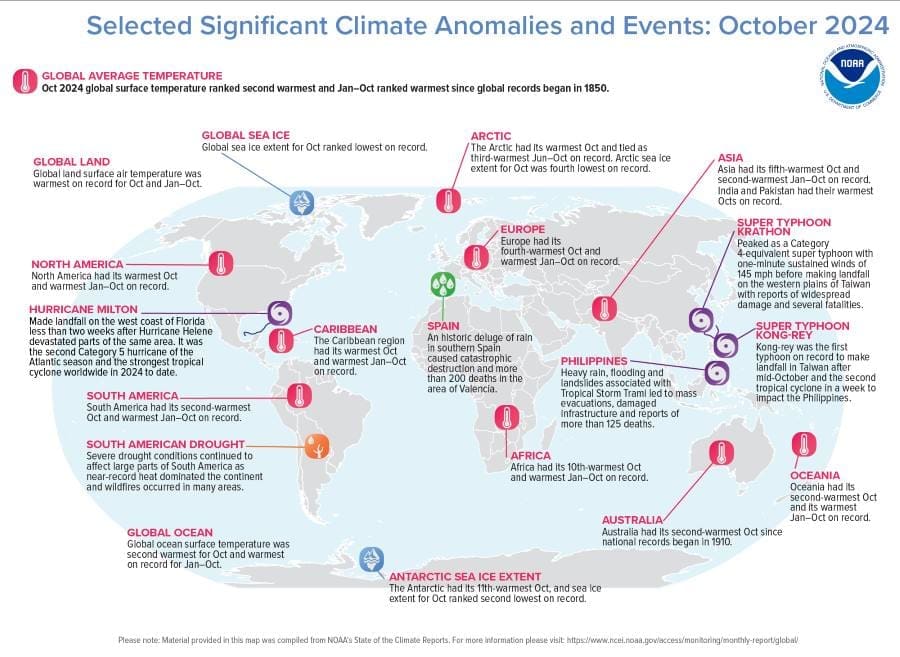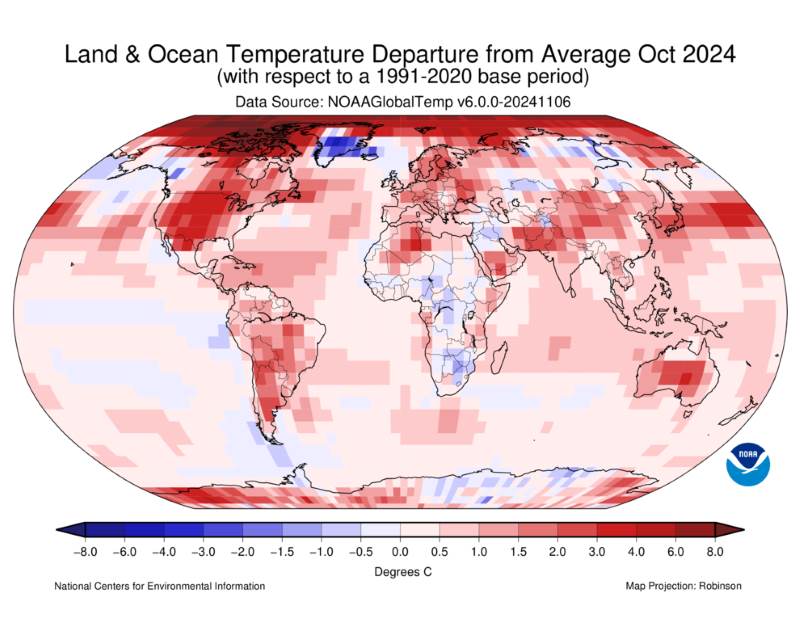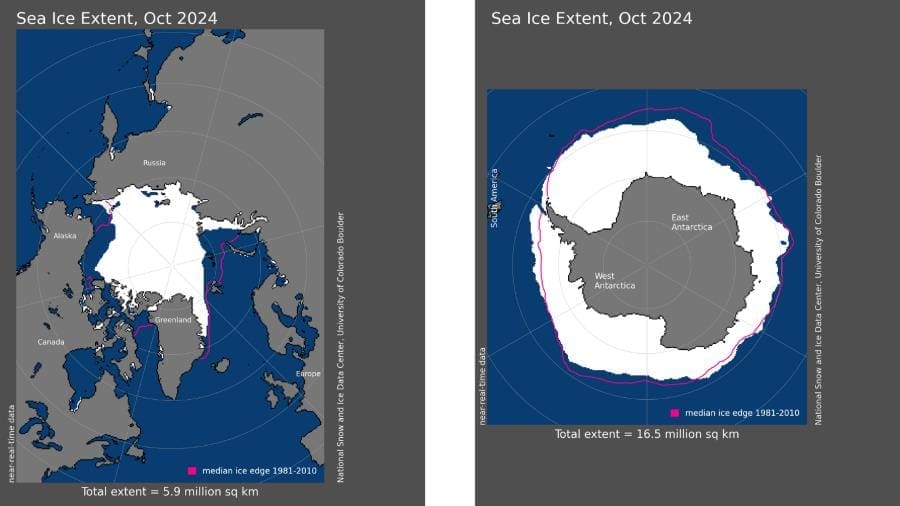Second-warmest October for the globe and the lowest sea ice extent on record.
Temperature
October 2024 marked the second-warmest October globally since records began, with an average surface temperature 2.38°F (1.32°C) above the 20th-century average of 57.2°F (14.0°C). This follows only October 2023 in warmth, which was 0.09°F (0.05°C) higher. According to the National Centers for Environmental Information (NCEI), there is a greater than 99% likelihood that 2024 will conclude as the warmest year on record.

Global land areas experienced unprecedented warmth, with October setting a record-high temperature for land surfaces. North America saw its warmest October, while South America and Oceania recorded their second warmest. In total, approximately 12% of the planet’s surface experienced record-high October temperatures.
Ocean temperatures were also notable, with the global ocean ranking as the second warmest for October. Despite widespread above-average sea surface temperatures, regions such as the tropical eastern Pacific, the Gulf of Alaska, and parts of the Indian Ocean observed cooler anomalies.

From January to October 2024, the year-to-date global surface temperature was 2.30°F (1.28°C) above the 20th-century average, the warmest such period on record. Every continent analyzed – North America, South America, Europe, Africa, and Oceania – experienced their warmest year-to-date period.
Snow Cover and Sea Ice
Snow cover in the Northern Hemisphere was near average for October, with notable regional differences. North America’s snow cover was 330,000 square miles below average, while Eurasia exceeded its average by 230,000 square miles. Snow cover was sparse across much of Canada but above average in eastern Russia.

Global sea ice extent hit an all-time low for October, measuring 8.68 million square miles, 1.25 million square miles below the 1991–2020 average. Arctic sea ice extent ranked fourth lowest, while Antarctic sea ice ranked second lowest, with deficits of 600,000 and 650,000 square miles, respectively. This marked a significant departure in the 46-year satellite record of sea ice extent monitoring.
Tropical Cyclones
October’s tropical cyclone activity was near the long-term average, with 11 named storms worldwide. The Atlantic basin accounted for five of these, including Hurricane Milton, which reached Category 5 strength before making landfall south of Tampa Bay. By the end of October, the global total for 2024 was 70 named storms, slightly below the long-term average of 76 storms annually.
These indicators – rising land and ocean temperatures, shrinking sea ice, and regional climate extremes – continue to reflect the intensifying impacts of global climate change. Scientists stress the urgency of mitigating greenhouse gas emissions to prevent further warming and ecosystem disruption.
Source: NOAA National Centers for Environmental Information
Featured image credit: PIRO | Pixabay




